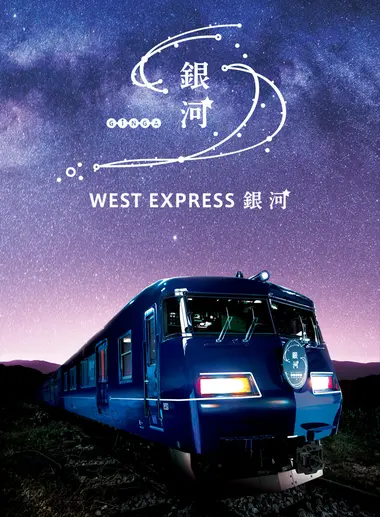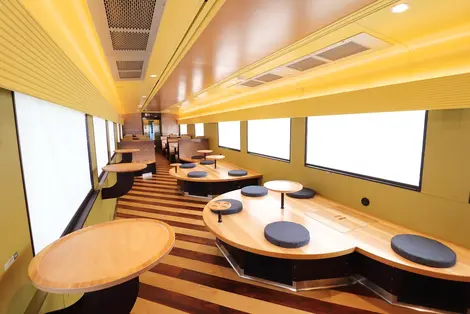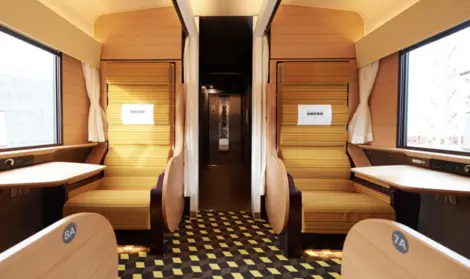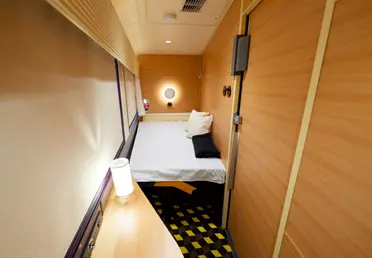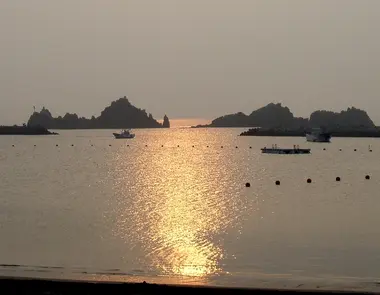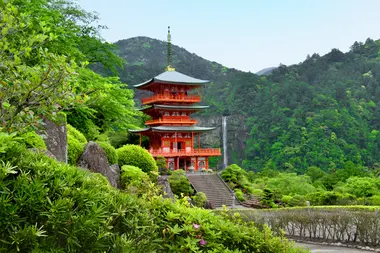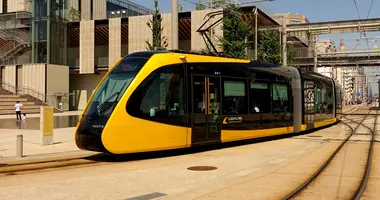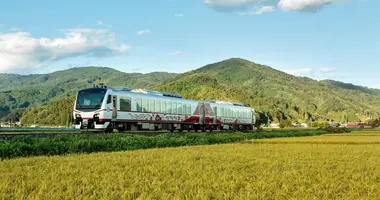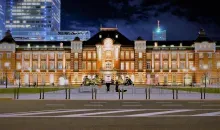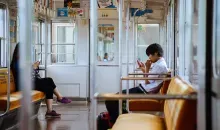The "West Express Ginga" Train
The night and day star train
the "West Express Ginga" is a train that offers you a journey between day and night, a play area, comfortable seats and sleeping berths to enjoy a day of discovery in a beautiful region of western Japan, departing from Kyoto or Osaka.
The 'Ginga' Concept
The name " West Express Ginga " takes its inspiration from the term 'Ginga' (meaning galaxy), which until the mid-2000s was the name of a popular night train running between Tokyo and Osaka. The new train's logo features stars forming a galaxy, representing the various regions of western Japan and the wonders they have to offer.
The train's midnight-blue livery reflects the concept and traditional color of the national JR West company, which created the train, as well as the celestial vault.
Each of the train's six carriages has a different ambience for different levels of comfort, with beautiful, colorful fabrics and lots of wood. There are comfortable, spacious seats for a pleasant journey, private lounges for friends or family, games areas, relaxation areas and panoramic lounges that encourage you to meet and chat with other passengers around a table, just as the designer Kawanishi Yasuyuki, a young designer increasingly in demand for his beautiful, original creations, intended.
When the time comes, depending on your chosen level of comfort, the train is transformed with reclining seats, bunks appear in the private areas, 'Nobi nobi' style single berths on hard mattresses and beds unfold in the Premium cabins, for those who want a truly comfortable night's sleep.
An overnight journey punctuated by discovery stops
The West Express Ginga leaves Kyoto in the late evening, around 9 p.m., then an hour later, it picks up passengers at Shin-Osaka and Osaka Tennoji stations. Finally, the big trip begins, heading south to the Kii-Wakayama peninsula.
In Wakayama, a first extended stop at almost midnight to enjoy a night ramen right next to the station in a restaurant that's just waiting for you - amusing, isn't it!
At 00:40 the journey resumes, and you can go back to sleep.
6.50am, the train stops at Kushimoto. You'd better be awake, as there's a bus waiting outside the station to take you to see the sunrise (especially in autumn and winter) over the famous Hashigui-Iwa rocks. An ancient natural volcanic formation that causes several rocks to rise in a perfect line into the ocean. A marvel that will delight you from the moment you wake up for a day that begins with a bang... on rails!
You'll then take the train back to the Shingu terminus at 9:37 am.
There, you'll have the whole day until the next day to explore all the beauty of the Kumano region, with its beautiful beaches and temples nestled in the mountains, such as the famous Kumano-Hayatama taisha and its must-see waterfall.
A day trip in return
The return journey doesn't take place on the same day, but on the following day.
So if you've chosen to return to Kyoto on the West Express Ginga, it will bea classic daytime train, not a sleeper conversion.
Departure from Shingu at 1:05 p.m., half-hour stop at Kushimoto from 2:31 p.m. to 3:07 p.m., then on to other stations where you'll be served local specialties right on the platform. You'll be able to chat with other passengers about what you've found at the various stations, and then enjoy the specialities together on board the train in the various lounge areas.
Arrival in Osaka at 8:16 pm, Shin-Osaka at 8:21 pm, then terminus in Kyoto at 8:53 pm.
The whole point of this daytime return trip is to be able to enjoy the inevitably beautifulscenery of the region, especially the seaside passages and the rice fields of Wakayama. This was not at all the case on the outward journey, which was exclusively by night, except at the end of the route.
At present (in 2024), this is what the West Express Ginga offers. The route may change next year, perhaps to the north coast of the Sea of Japan towards Izumo.
The first fare is 8670 yen for a reclining seat.

